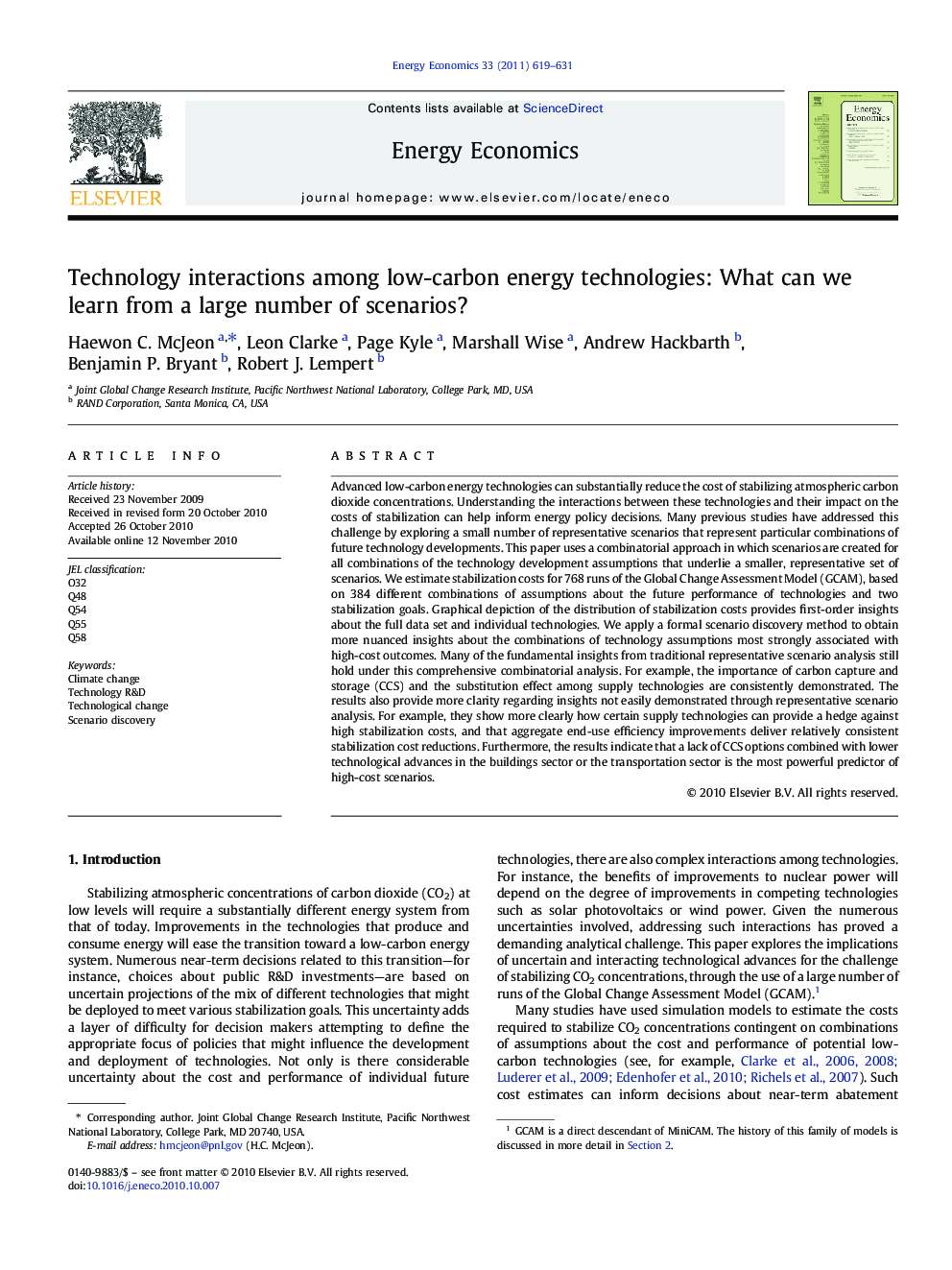| کد مقاله | کد نشریه | سال انتشار | مقاله انگلیسی | نسخه تمام متن |
|---|---|---|---|---|
| 5065079 | 1372303 | 2011 | 13 صفحه PDF | دانلود رایگان |

Advanced low-carbon energy technologies can substantially reduce the cost of stabilizing atmospheric carbon dioxide concentrations. Understanding the interactions between these technologies and their impact on the costs of stabilization can help inform energy policy decisions. Many previous studies have addressed this challenge by exploring a small number of representative scenarios that represent particular combinations of future technology developments. This paper uses a combinatorial approach in which scenarios are created for all combinations of the technology development assumptions that underlie a smaller, representative set of scenarios. We estimate stabilization costs for 768 runs of the Global Change Assessment Model (GCAM), based on 384 different combinations of assumptions about the future performance of technologies and two stabilization goals. Graphical depiction of the distribution of stabilization costs provides first-order insights about the full data set and individual technologies. We apply a formal scenario discovery method to obtain more nuanced insights about the combinations of technology assumptions most strongly associated with high-cost outcomes. Many of the fundamental insights from traditional representative scenario analysis still hold under this comprehensive combinatorial analysis. For example, the importance of carbon capture and storage (CCS) and the substitution effect among supply technologies are consistently demonstrated. The results also provide more clarity regarding insights not easily demonstrated through representative scenario analysis. For example, they show more clearly how certain supply technologies can provide a hedge against high stabilization costs, and that aggregate end-use efficiency improvements deliver relatively consistent stabilization cost reductions. Furthermore, the results indicate that a lack of CCS options combined with lower technological advances in the buildings sector or the transportation sector is the most powerful predictor of high-cost scenarios.
Journal: Energy Economics - Volume 33, Issue 4, July 2011, Pages 619-631